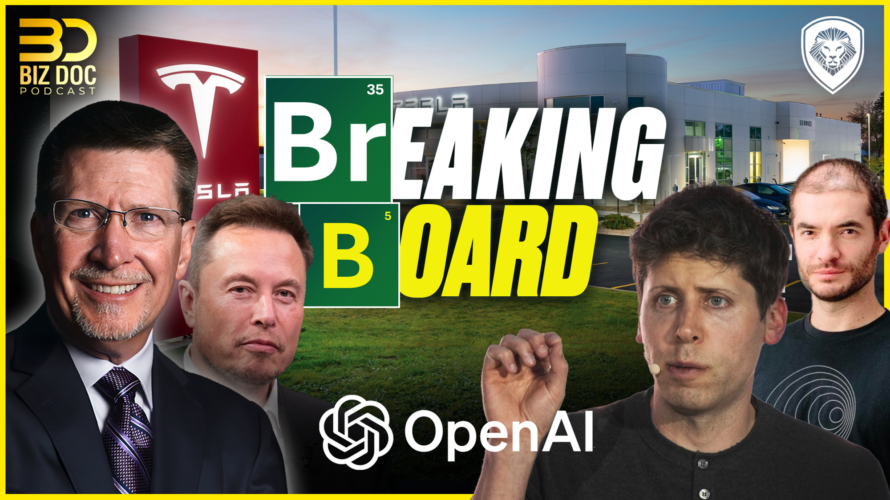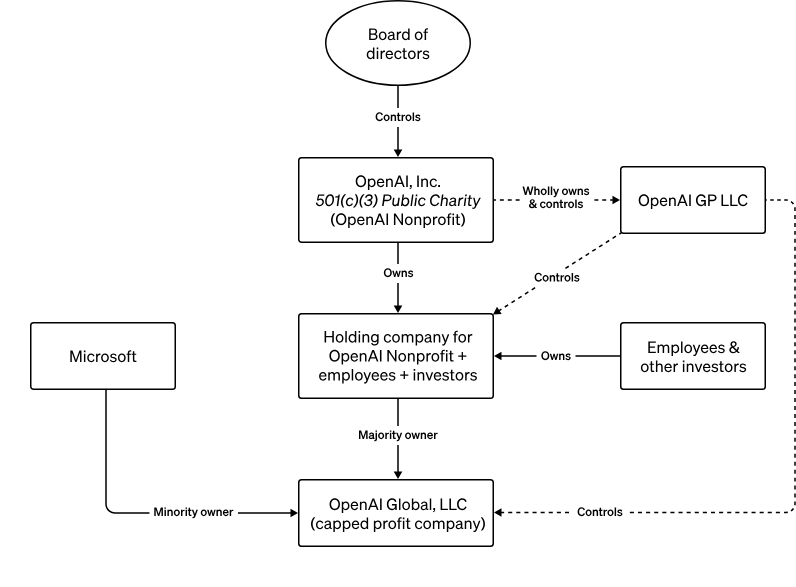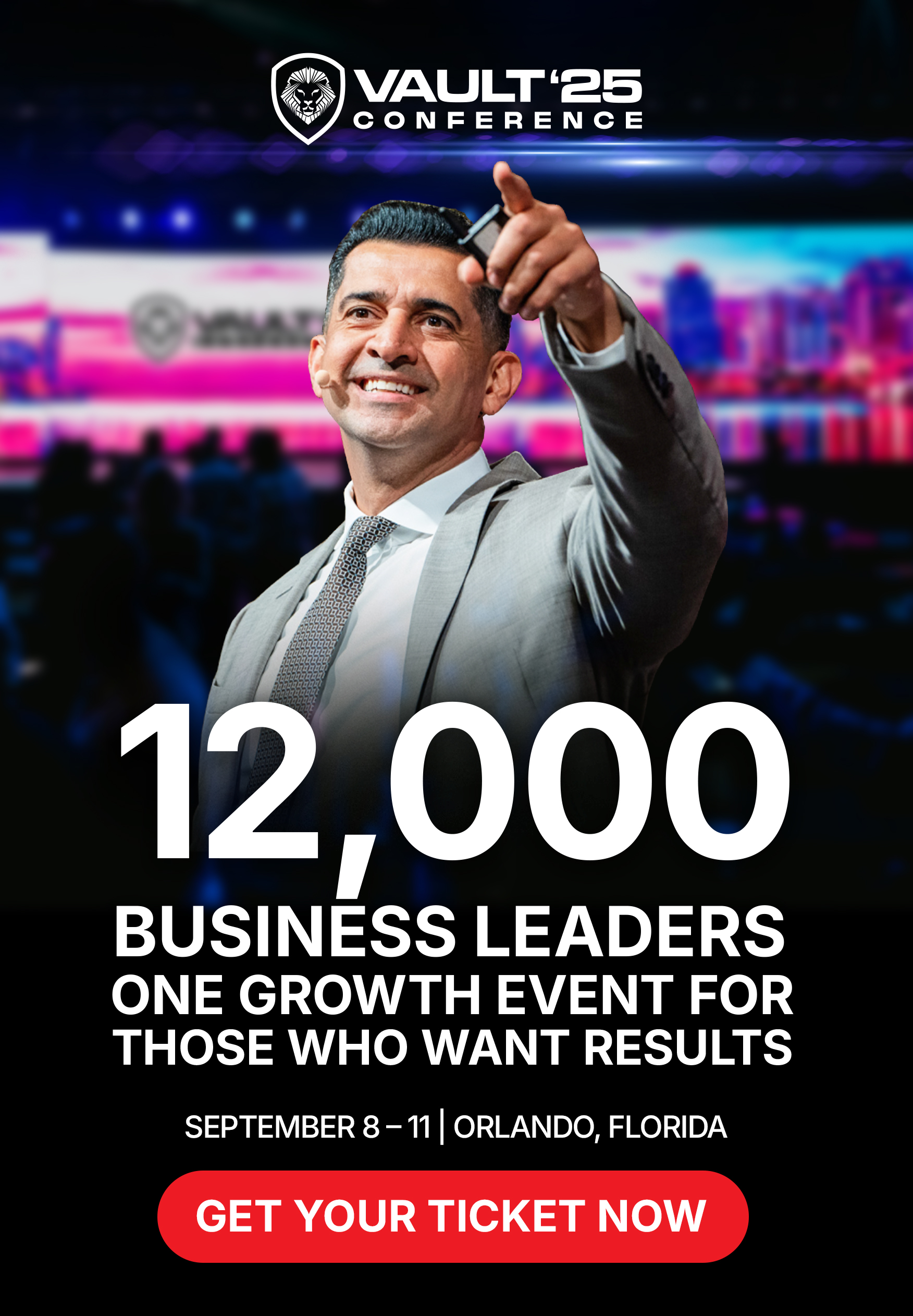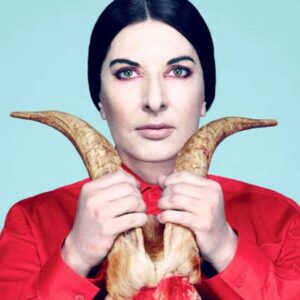In the latest episode of the “Biz Doc Podcast,” Tom Ellsworth breaks down the recent ousting Sam Altman from his role as the CEO of OpenAI, the tech firm which produces ChatGPT.
This has sparked internal conflict with employees expressing discontent and threatening to quit. The company’s chief scientist has also expressed regret over his involvement in the decision, further fueling the controversy.
OpenAI was founded as a nonprofit in December 2015 by a rather large cohort of people, including Ilya Sutskever, Greg Brockman, Trevor Blackwell, Vicki Cheung, Andrej Karpathy, Durk Kingma, Jessica Livingston, John Schulman, Pamela Vagata, and Wojciech Zaremba. Sam Altman and Elon Musk served as initial board members.
They had a simple vision inspiring their mission: artificial intelligence can benefit humanity as whole, and we can advance it in a way that will avoid its dangers.
In 2015, Elon Musk, Greg Brockman, Sam Altman, Reid Hoffman, Jessica Livingston, Peter Thiel, Amazon Web Services (AWS), Infosys, and YC Research collectively pledged over $1 billion. However, only $130 million was collected.
But this was put to good use, Biz Doc says. In 2017, they released “Universe,” a platform to measure and train AIs.
In 2018, Musk resigned due to conflict of interest (Tesla Self-Driving AI). There may have been drama behind the scenes, but at least on the outside the decision was made purely to put a space of separation between Tesla and OpenAI. Also in 2018, OpenAI showcased Dactyl, an AI that could power a machine to behave like human hands and could solve a Rubik’s Cube.
In 2019, OpenAI announced it intended to convert to a For-Profit structure. Board and Non-Profit oversee the for-profit entity which is able to recruit talent with the incentive of equity in the company.
Along with that, Microsoft announced a partnership and $1 billion investment commitment.
But at this moment, Elon spoke up:
“The reason OpenAI exists at all is because I used to be really close friends with Larry Page and stay at his house in Palo Alto. We would talk late in the night about AI safety, and my impression was that Larry wasn’t taking AI safety seriously enough. He really seemed just focused on achieving digital superintelligence — essentially a Digital God, if you will, and as soon as possible. This is not good.
So I thought, ‘What is the furthest thing from Google?’ which would be a fully open nonprofit. So the ‘open’ in OpenAI stands for open source and transparency so people know what is going on. I’m normally in favor of for-profit companies, but the idea was not to be a profit-maximizing demon from hell that never stops. So that is why OpenAI was founded.
Very, unfortunately, they decided to become a for-profit company.”
So, what is OpenAI’s structure anyway? Biz Doc walks us through a chart on OpenAI’s website:
Even though OpenAI created an LLC, it was capped at a certain profit threshold. Additionally, through a complicated tree of other organizations, it was ultimately still owned and operated by the original nonprofit board that conceived it.
In 2019, OpenAI also released GPT-2, short for Generative Pre-trained Transformer. It was a highly capable language model with 1 billion parameters, the forerunner to GPT-4 or what we now know as ChatGPT.
In 2020, GPT-3 was launched, the third iteration of their generative language model. This one had 175 billion parameters, enabling it to perform a wide range of natural language processing tasks.
Learn the benefits of becoming a Valuetainment Member and subscribe today!
In 2021, OpenAI put out DALL-E, a deep learning tool that generates images from descriptions
That same year, it announced an “expanded partnership” with Microsoft (valuation approximately at that $14 billion point).
In 2022, ChatGPT (based on GPT 3.5) was made available through a free preview, with 1 million sign ups in 5 days.
In Jan. 2023, OpenAI was working to raise new funding at approximately $29 billion valuation. Its current investors included Peter Thiel, Reid Hoffman, Jessica Livingston, Microsoft, Khosla Ventures, Infosys, Thrive Capital and Tiger Global.
In Feb. 2023, Microsoft announced $10 billion multi-year investment (rumors said the arrangement gave MSFT 75 percent of profits and up to 49 percent ownership). In March 2023, ChapGPT Plus was made available on a $20/month subscription.
That same month, GPT-4 was released with an API and as a feature of ChatGPT Plus.
In Nov. 2023, OpenAI temporarily put Chat GPT Plus on waitlist due to demand.
The Biz Doc observes that two ideological camps within OpenAI emerged in 2023, the Safety Bias and the Commercialization Bias. Sutskever, certain board members, and others wanted an international approach to safety and for the company to pursue a measured and thoughtful pace. Meanwhile, Altman was pushing for a more manic startup pace with revenue generation and speed of development as his primary concern.
Then came the “weekend from hell”… which Valuetainment has covered here and here.
Watch the rest of Biz Doc’s case study to hear how Tom breaks down the weekend of Altman’s firing and what happened next. This saga is ongoing, so be sure to revisit VT.com for updates.




















Add comment